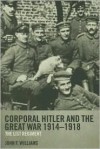Currently reading
COUNTING THE DAYS OF THE CONDOR

The Focke Wulf FW 200 Condor, a four-engined aircraft, initially served as a civil airliner in the late 1930s. Upon the outbreak of the Second World War in September 1939, the Condor was pressed into service with the Luftwaffe as a maritime reconnaissance and anti-shipping aircraft.
With the subsequent acquisition of bases in Norway and France, the range of the Condor to venture deep into the heart of the Allied convoys in the Atlantic and the Far North was extended considerably. During 1940-41, Condors enjoyed considerable success in sinking Allied shipping and guiding U-boats to convoys in both the Atlantic and in the waters around Northern Russia. But as Allied countermeasures to counter the Condors grew in effectiveness, their successes against the convoys declined significantly. Nevertheless, FW 200s soldiered on to the end of the war in the anti-shipping role on other fronts (e.g. the Mediterranean), as transports (e.g. in the attempts to keep the German 6th Army supplied in the Stalingrad pocket), in maritime reconnaissance, and as airliners.
This is a well-written, well-researched book about a largely unsung aircraft that, despite its own shortcomings and the challenges it faced through 6 years of war, performed creditably the roles allotted to it. There are also lots of fantastic photos and illustrations of the FW 200, which will thrill any aviation enthusiast and scale modeler.
 2
2













